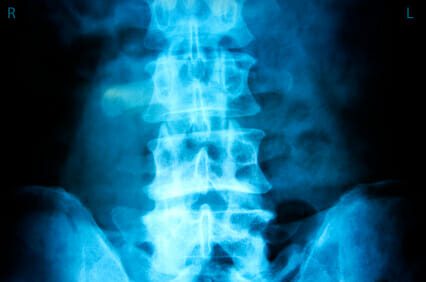Can Any Attorney Handle a Texas Spinal Injury Case?

The human back is a complex structure consisting of bones, muscles, and tissue extending from the neck all the way down to the pelvis. At the center of it all is a bundle of nerves called the spinal cord which transmits information between the brain and the rest of the body. These nerves are enclosed and protected by the 33 vertebrae that make up the backbone or spine.
An injury to any part of the spinal cord can disrupt the function of the back and body as a whole, resulting in chronic pain, disability, and even paralysis. Further, the full extent of a spinal injury may not be immediately evident. Having an attorney who truly understands spinal injuries can help ensure you receive the medical attention you need and the financial compensation you deserve.
What is the Difference Between Complete and Incomplete Spinal Cord Injuries?
If you have suffered a spinal injury, chances are your injury has been categorized as either complete or incomplete. While this is often misinterpreted as meaning the spinal cord was either completely or partially severed, the measure of whether a spinal injury is complete or incomplete is actually dependent on how it affects sensory and motor function.
- Incomplete spinal cord injuries occur when the spinal cord is bruised, stretched, crushed, or partially severed and the injured person is still able to retain some sensory and motor function. The degree of function retained depends on the extent of the injuries suffered.
- Complete spinal cord injuries are absolute and result in total or near-total loss of motor function and sensation below the area of injury. A common example of this would be a fully severed spinal cord. While it may be possible to regain some function and feeling, it will require extensive treatment and rigorous physical therapy.
In most situations, the completeness of a spinal cord injury is not fully known until 6 to 8 weeks after the injury occurs.
Common Types of Incomplete Spinal Cord Injuries
Incomplete spinal injuries can be further categorized by the type of trauma suffered, where on the spinal cord the injury occurred, and the significance of the resulting loss of function. Some of the most common types of incomplete or partial spinal cord injuries include:
- Anterior cord syndrome: An injury to the front of the spinal cord that damages the motor and sensory pathways of the spinal cord. Typically, the injured person may retain some sensation but will struggle with movement.
- Central cord syndrome: An injury to the center of the cord which damages the nerves that carry signals from the brain to the spinal cord. Central cord injuries can result in loss of fine motor skills, paralysis of the arms, and partial impartment in the legs. Injured individuals may also suffer loss of bowel and bladder control as well as the ability to sexually function.
- Brown-Sequard syndrome: An injury to one side of the spinal cord. Loss of function will be more pronounced on one side of the body while the other side may retain full function. Severity of the injury and loss of function varies greatly from patient to patient.
How Does the Location of a Spinal Injury Affect Paralysis?
When loss of function or sensation occurs, it occurs beneath the highest vertebrae to suffer significant damage. This is because the paralyzing injury effective blocks or breaks the signal being sent by the brain down the spinal cord.
Typically, paralysis will be defined as:
- Tetraplegia (Quadriplegia): Severe spinal injuries to the cervical spinal cord (C1-C8 vertebrae) that result in varying degrees of paralysis in all limbs. In addition to limb paralysis, tetrapeligia can result in difficulties with bladder and bowel control, respiration, and other essential and routine bodily functions. Generally, the higher on the cervical spinal cord occurs, the greater the loss of sensation and function.
- Paraplegia: Injuries to the thoracic spinal cord (T1-T12 vertebrae) which results in loss of sensation and movement in the lower half of the body, including the legs. As with cervical spinal cord injuries, the severity of the injury is greater when they occur closer to the top thoracic vertebra.
- Triplegia: Injuries the result in loss of sensation and movement in one arm and both legs. Triplegia is generally the product of an incomplete spinal cord injury.
Common Causes of Spinal Cord Injuries
There are many different causes of spinal cord injuries, including
- Motor vehicle accidents
- Slip and fall accidents
- Acts of physical violence
- Recreational sports activities
- On the job accidents
- Medical malpractice
- Defective products
How Can an Experienced Personal Injury Attorney Benefit My Spinal Injury Claim?
If you or a loved one has suffered a spinal injury due to the negligence of another, it is essential that you hire a personal injury attorney that is familiar with spinal cord injuries and understands just how catastrophic a spinal injury is.
Thomas J. Henry has handled numerous spinal injury cases over the past 25 years and in handling those cases, we have built a network of spinal injury experts who can investigate and explain the extent of your injuries. This includes explaining how your injury occurred, how your injury has impacted your quality of life, and how much your injury will cost you.
Our experienced personal injury attorneys are backed by the legal and financial resources necessary to recover the maximum amount of compensation for your injuries. Insurance companies will try to offer amounts that do not take into account the catastrophic impact a spinal cord injury may have on the rest of your life. We will fight to get you the compensation you deserve for your injuries, pain and suffering, lost wages, medical costs, mental anguish, and more. Our lawyers are available 24/7, nights and weekends to evaluate your claim. Contact us today for a free case review.
Blog











